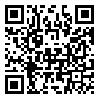BibTeX | RIS | EndNote | Medlars | ProCite | Reference Manager | RefWorks
Send citation to:
URL: http://mjiri.iums.ac.ir/article-1-2800-en.html

 , Arash Mirabzadeh
, Arash Mirabzadeh 
 , Marzieh Nojomi
, Marzieh Nojomi 
 , Ali Ahmadi Tonkaboni
, Ali Ahmadi Tonkaboni 
 , Faranak Nadarkhani
, Faranak Nadarkhani 
 , Mosleh Mirzaie
, Mosleh Mirzaie 
 , Narges Chimeh
, Narges Chimeh 

Background: Implementing community-based psychiatric services is one of the priorities of the WHO/EMRO mental health programs. This study presents an aftercare service, as a community based-service, for patients with severe mental illness (SMIs).
Methods : In this randomized controlled clinical trial design, 176 patients, who attended selective hospitals with SMI, were allocated into three groups: clinical case managers provided by general practitioners, nurses and the control group (usual treatment). The clients and their caregivers received monthly home visits (education and treatment supervision). The effectiveness of the intervention was measured by indicators of psychopathology such as scores of YOUNG, caregivers’ knowledge and satisfaction with the services. Health-related quality of life (SF-36) was considered as the primary outcome variable. Data were collected at baseline and at 12 months follow-up. Direct and indirect medical costs were obtained through a periodic completion of questionnaires and interviews by caregivers. Cost effectiveness ratio was estimated as cost per QALY gained in each group. SPSS 16.0 was used in this survey and statistical methods were chi-square, ANOVA, Scheffe as post-Hoc test and paired sample t-test with 95% confidence interval and 0.05 significance level.
Results : The results of our study revealed that the score of YOUNG, caregivers’ knowledge and satisfaction with service were improved in both intervention groups after 12 months. Improvement in health-related quality of life was observed in the general practitioner and nurse group. The incremental cost effectiveness ratio was 5740807 IRR and 5048459 IRR per QALYs gained in the general practitioner and nurse groups, respectively.
Conclusion : The model of aftercare services provided by trained nurses is the most cost- effective and feasible model for Iran’s socio-economic conditions with low resource allocations.
| Rights and permissions | |
 |
This work is licensed under a Creative Commons Attribution-NonCommercial 4.0 International License. |



